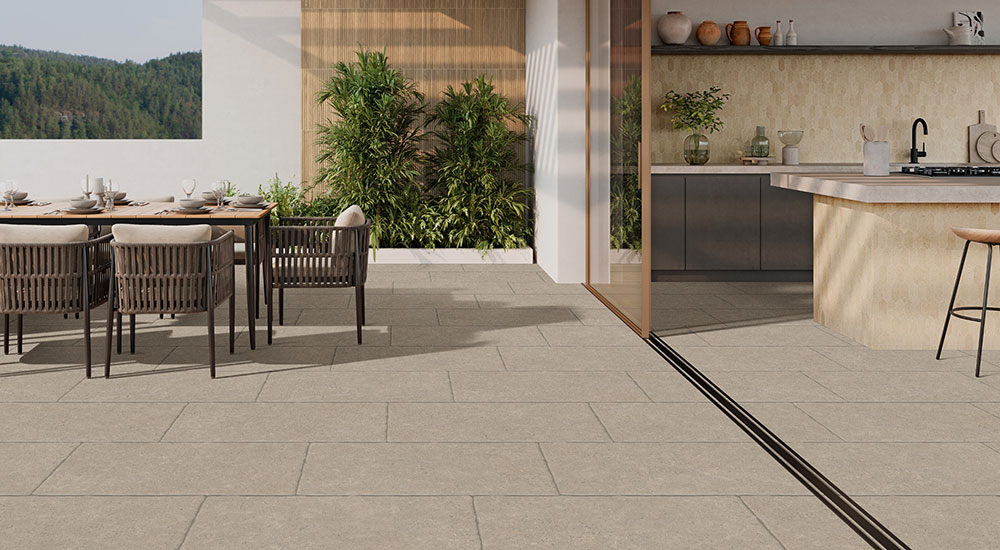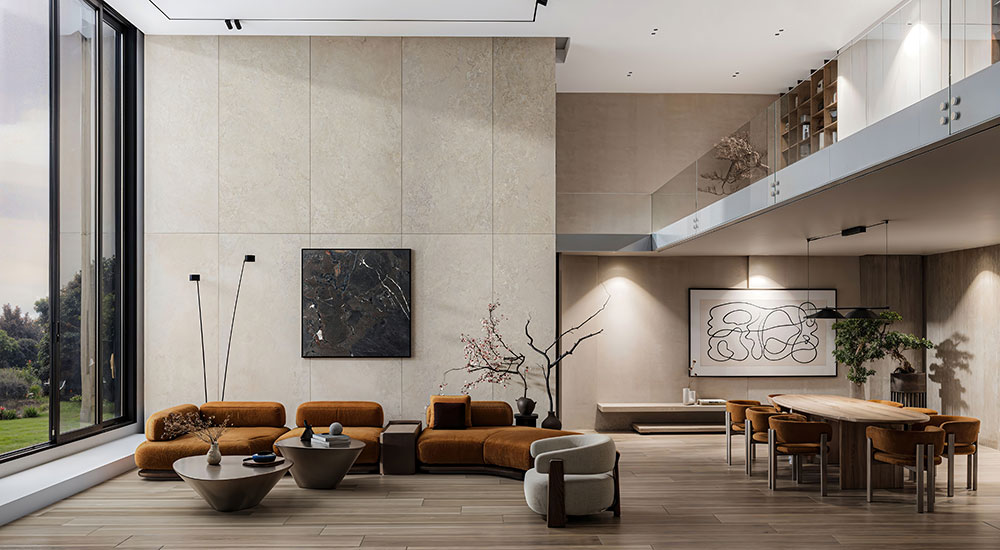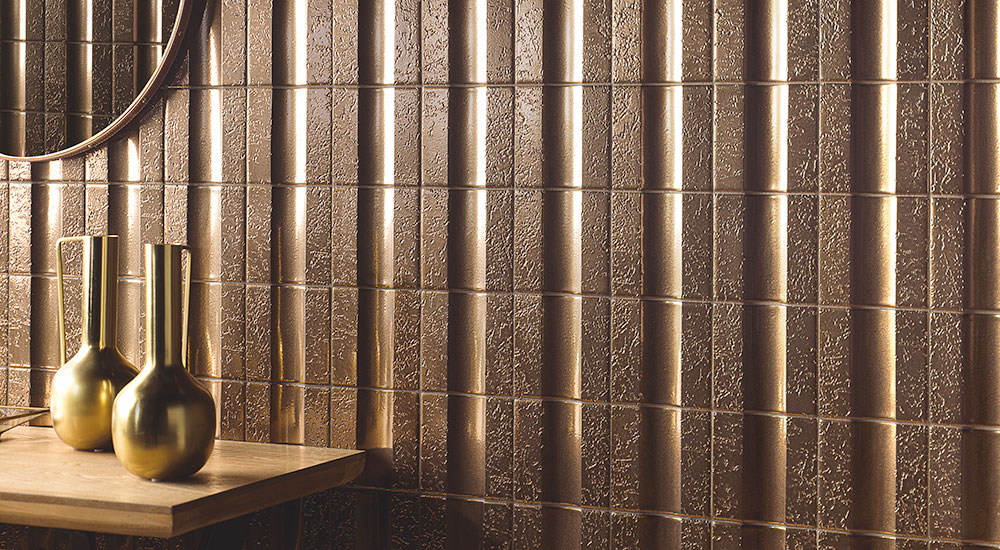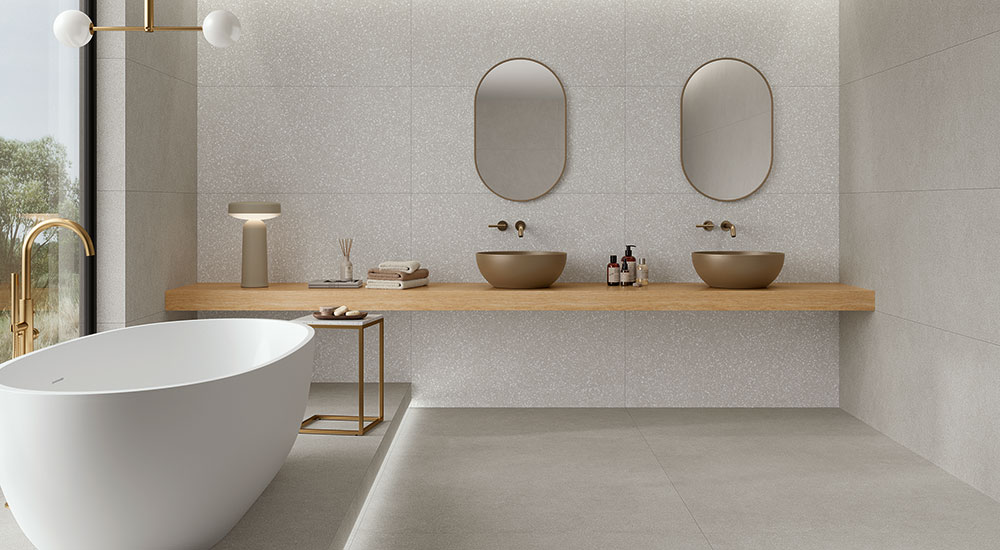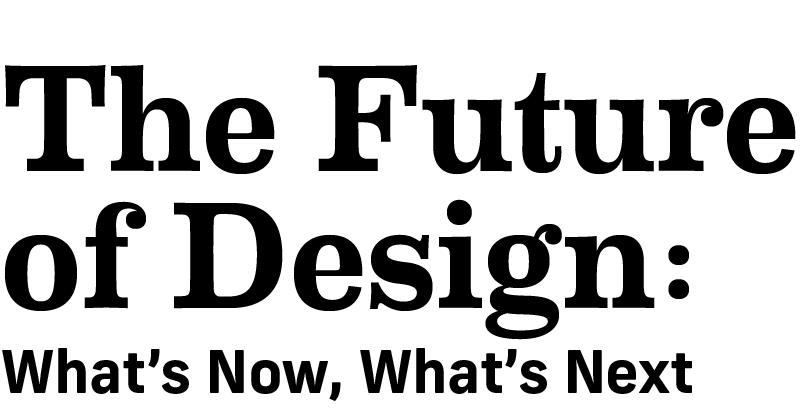More than 100 ceramic tile manufacturers from the Spanish delegation recently traveled to Bologna, Italy, to debut emerging innovations at Cersaie, the International Exhibition of Ceramic Tile and Bathroom Furnishings. Held Sept. 22–26, 2025, the international event brought together architects, interior designers, specifiers, distributors and manufacturers to explore the latest advancements shaping the global ceramic industry and preview emerging design directions for the year ahead.
This year, Spain reaffirmed its position as a global leader, with companies presenting forward-thinking collections that reflected the nation’s signature balance of innovation, craftsmanship and sustainable production. As the second-largest exhibiting group after the host country, the Spanish contingency stood out for its cutting-edge materials, tactile surfaces and artistic expression.
Cersaie once again provided a dynamic platform for Tile of Spain manufacturers to debut new formats, evolving technologies and creative applications that define the future of ceramics. The following trends highlight the exceptional Spanish designs and visionary spirit unveiled at this year’s fair.
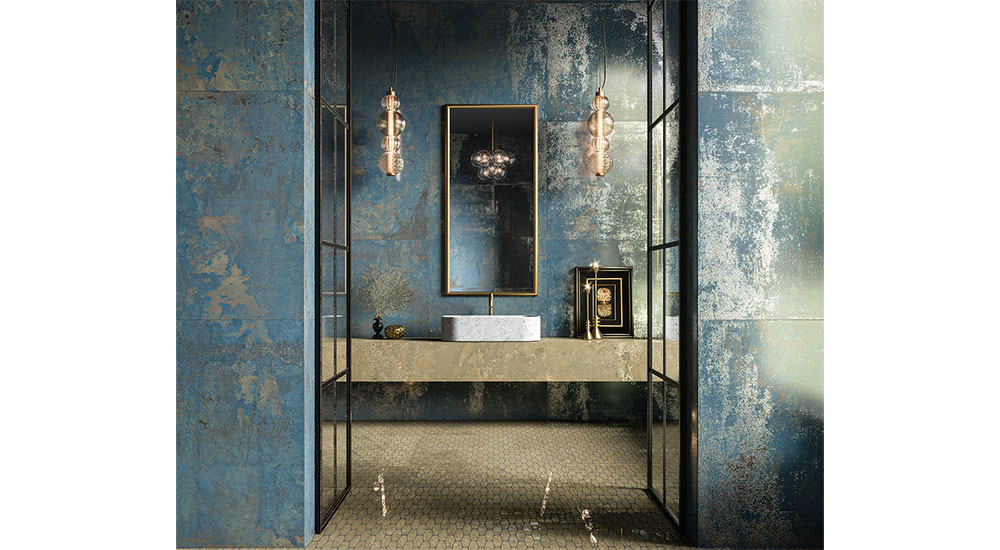
Digital Realism and Multi-Dimensional Surfaces
Ceramic technology has entered a new era of realism, where the boundaries between nature and digital innovation continue to blur. Using advanced multi-stage digital printing, structured glazing and integrated lighting simulation, Tile of Spain companies are now achieving extraordinary depth, sheen variation and tactile precision. From weathered patinas to micro-etched stone surfaces, tiles no longer simply imitate natural materials. They capture their evolution over time, from erosion to polish, resulting in surfaces that feel both authentic and elevated beyond their natural inspirations
Tactile Neutrality
Soft, neutral palettes remain foundational to contemporary design, but what defines the incoming spectrum of neutral hues is tactility. Creams, oatmeals and warm beige tones are paired with intricate surface textures, subtle glaze gradations and layered matte finishes that enhance sensory depth. These surfaces invite touch, shifting the experience of ceramics from visual to haptic. This subtle, yet distinct evolution in neutrality reflects a desire for balance without sterility that still feels deeply human and comforting.
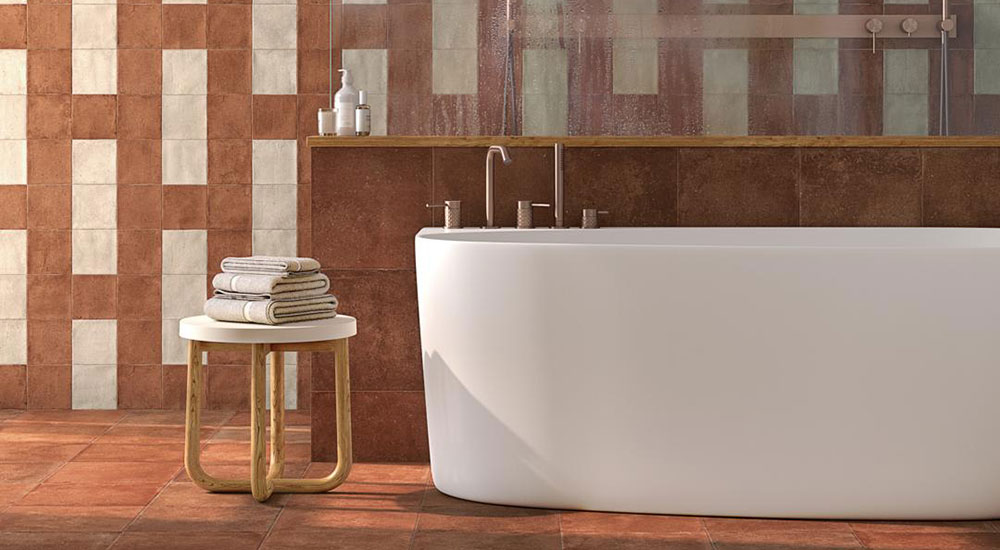
Modular Versatility
Spanish tile makers are experimenting with modular systems, rather than isolated products. They are developing cohesive suites of ceramics that span multiple sizes, finishes and use cases, allowing designers to create fully integrated spaces from one unified perspective. Tiles move fluidly from floors to walls, facades, pools and furnishings, with complementary trims and structural elements reinforcing continuity. This modular thinking reflects a broader architectural shift toward seamless spatial flow and adaptive design. It also enhances practicality, offering specifiers the ability to mix and match within a single aesthetic family to suit performance and budget requirements.
Elevated Minimalism
The minimalism movement is undergoing a shift, beyond smooth, blank surfaces toward designs defined by subtle complexity. Among the new generation of Spanish ceramics, fluted terrazzo, ultra-matte concrete and softly structured stuccos redefine simplicity through mindful detail. Through careful modulation of light, texture and tone, these understated designs achieve depth without distraction. The result is a modern aesthetic that feels architectural and timeless, offering a sense of quiet luxury and visual stillness in increasingly overstimulated environments.
Sustainable by Design
Sustainability in ceramics is no longer an aspiration; it is becoming embedded in every stage of design and production among all Spanish manufacturers. The continued expansion of thin-gauged porcelain, with formats as slim as 6mm, reduces raw material use, shipping weight and carbon footprint while retaining the strength and durability ceramics are renowned for. At the production level, companies are optimizing digital processes to minimize waste, using modular systems to extend product lifecycles and improve adaptability. These practices underscore a collective commitment within the Spanish industry to creating beautiful, long-lasting materials that also support environmental responsibility and circular design principles.

